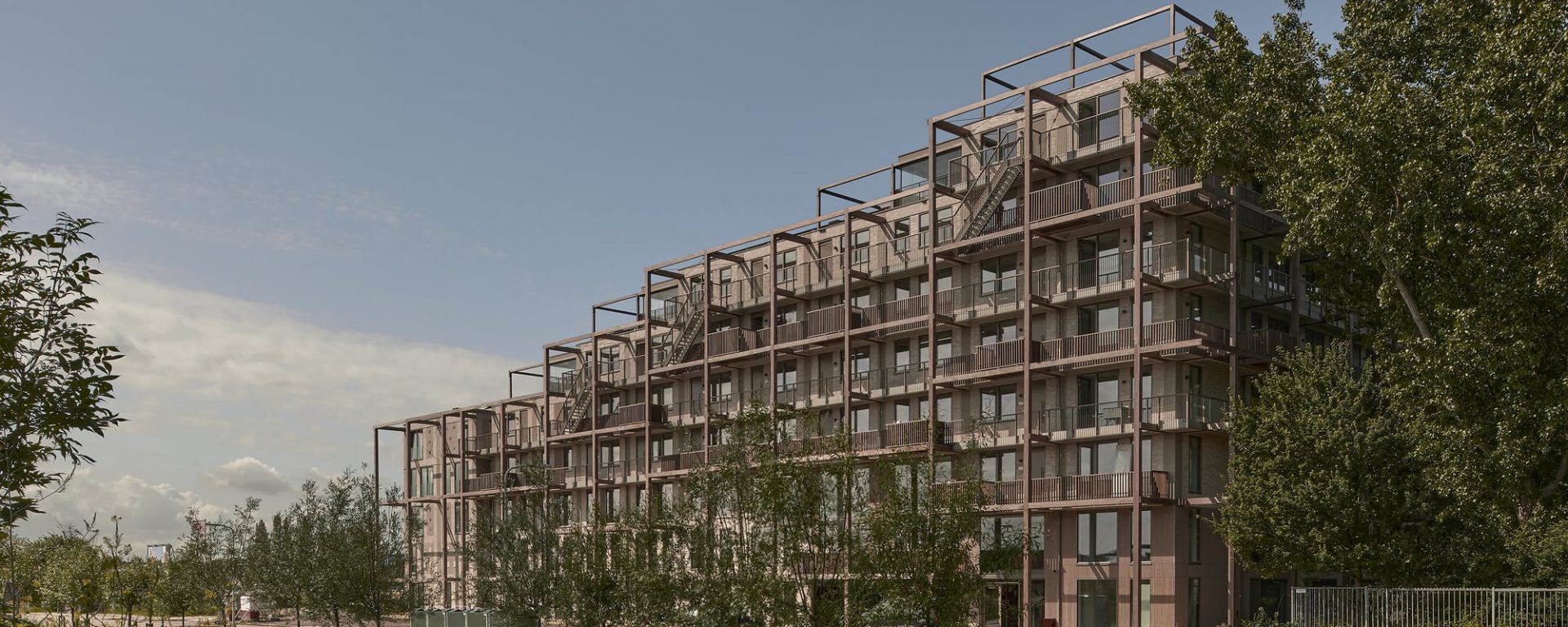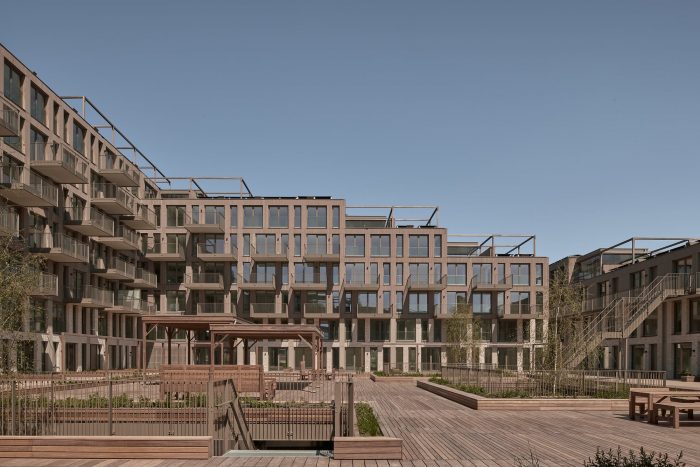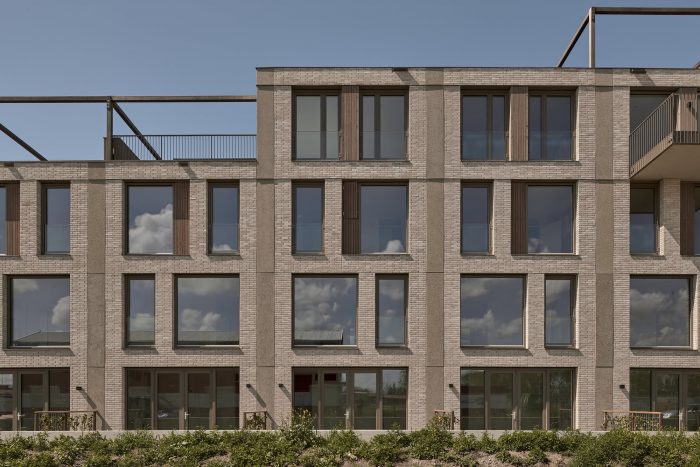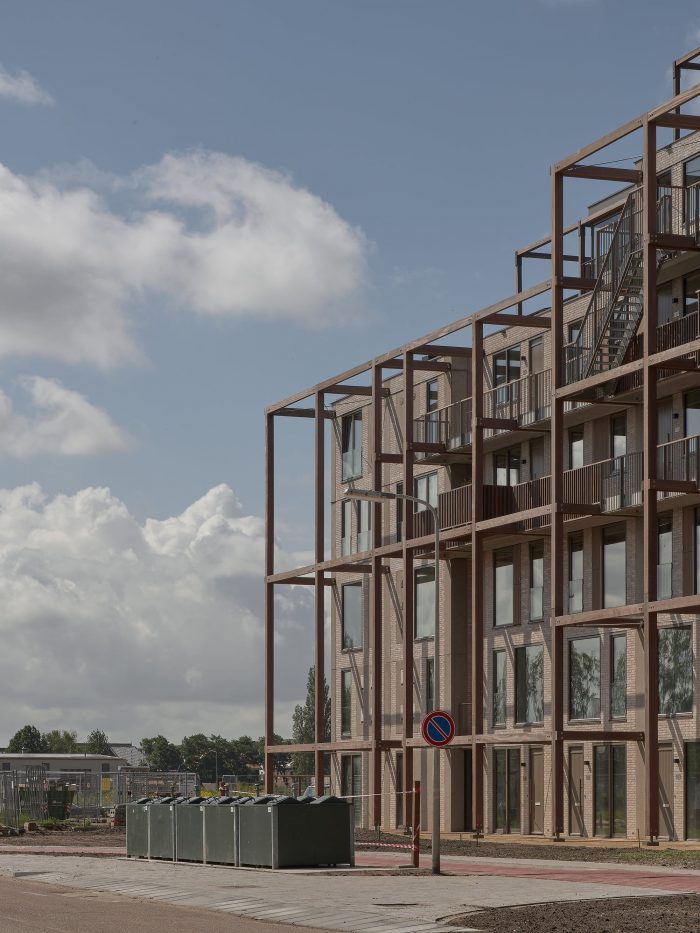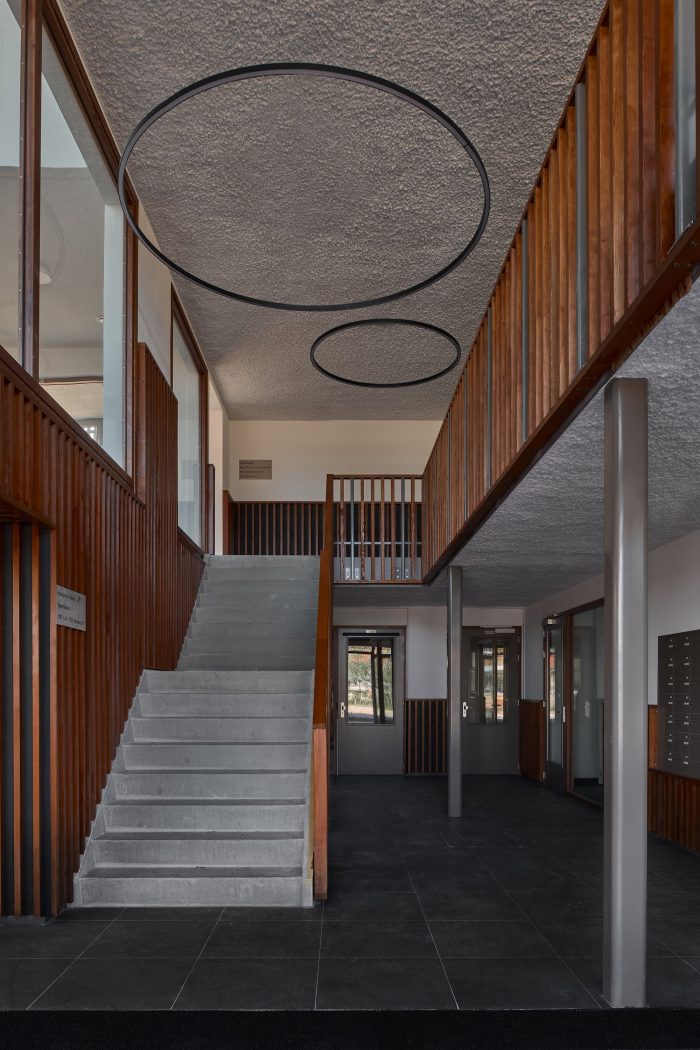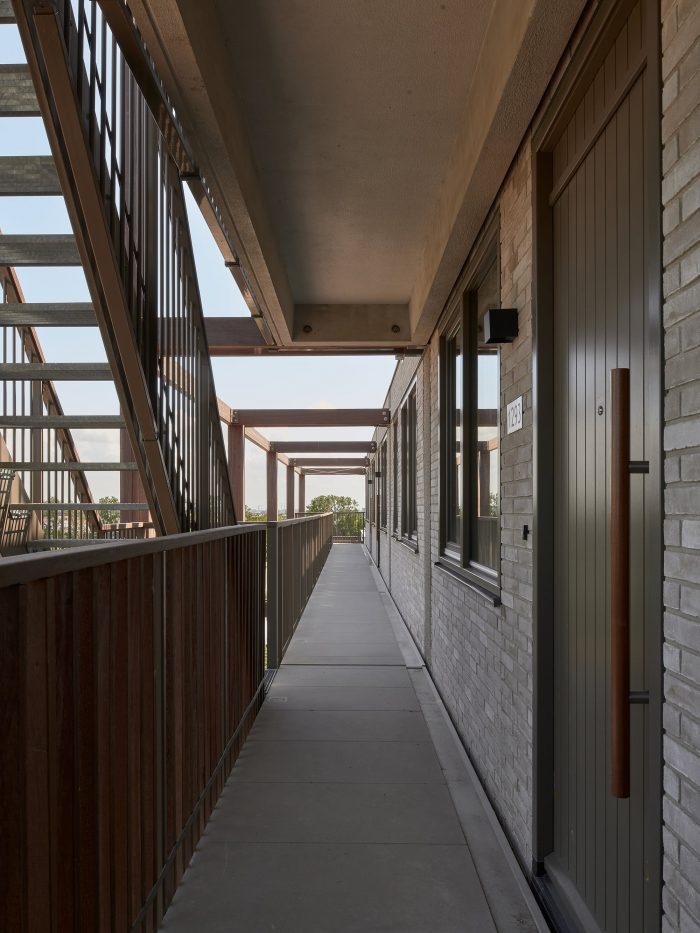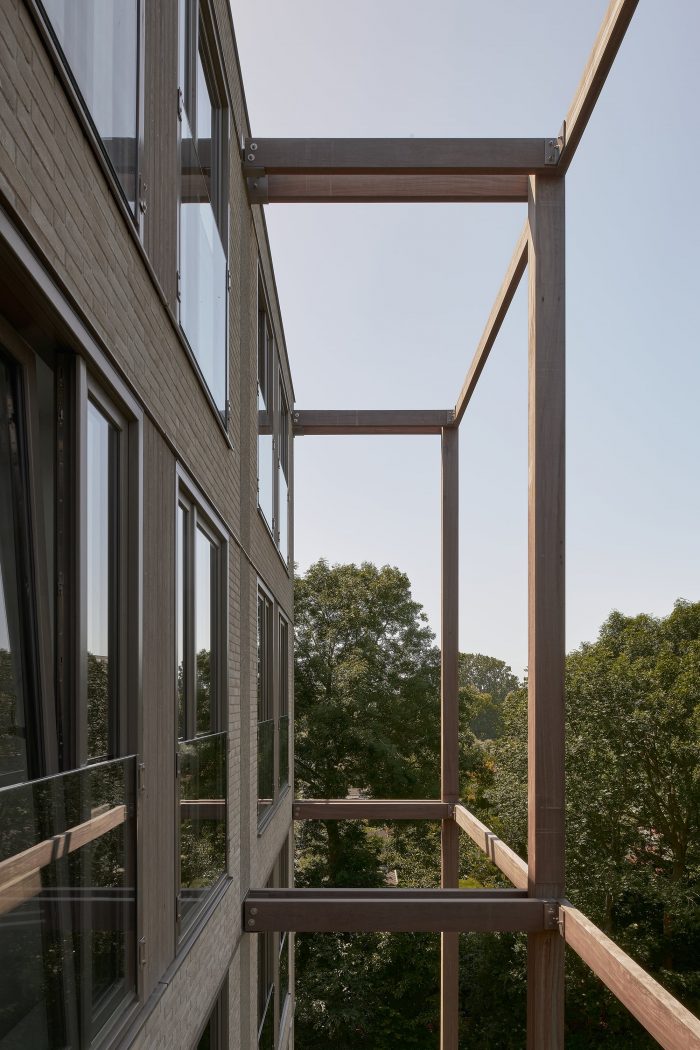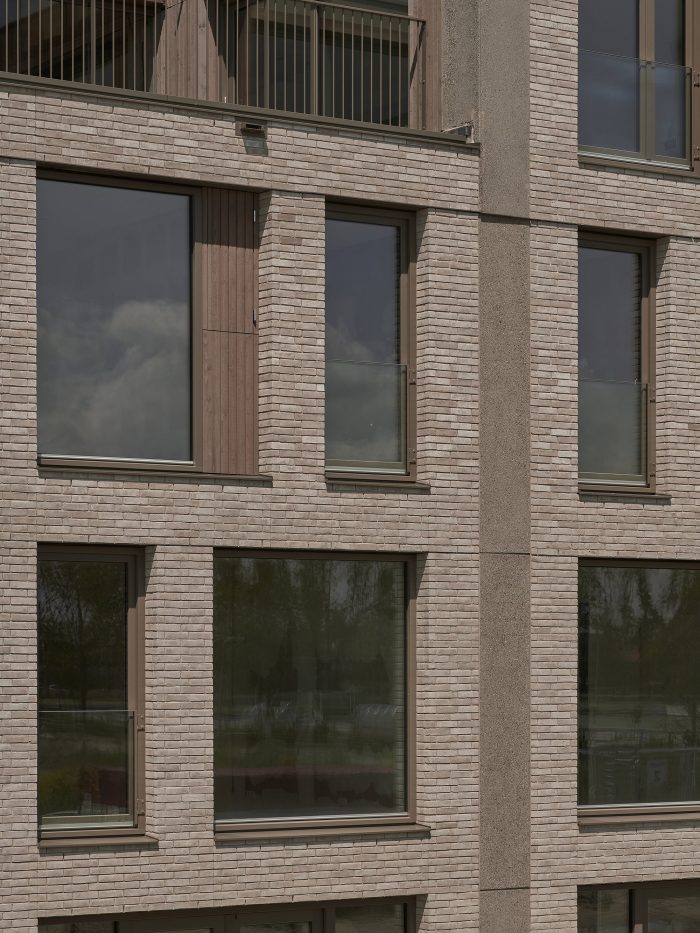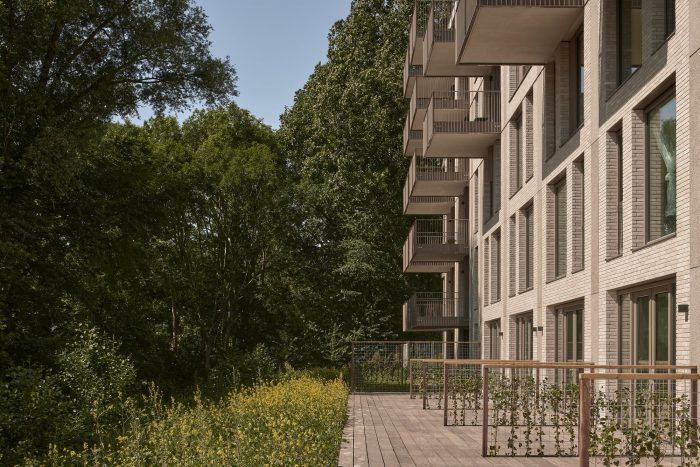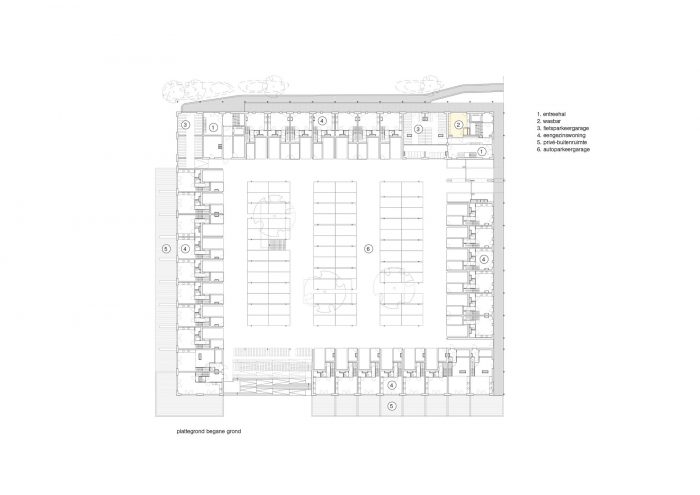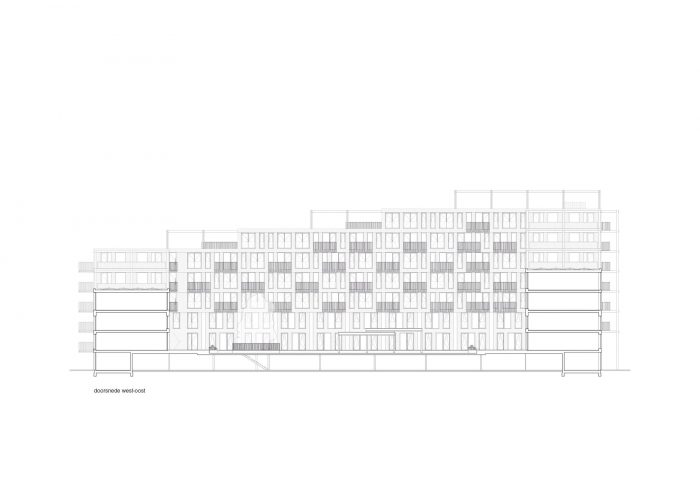Leyhof是位于海牙Proeftuin Erasmusveld新区的一座非常可持续的住宅建筑。它体现了人们对健康和自觉生活的渴望。Proeftuin Erasmusveld是一个在各方面都准备好迎接未来的社区。气候/景观、能源、流动性、共同生活和健康等主题是核心。开发商BPD通过竞争选择了一个年轻的设计团队来设计Leyhof,这是该地区第一个完工的住宅建筑。这使 “有意识的不同生活 “这一主题以一种创新的方式得以形成。Leyhof已经成为一个绿色和特殊的生活环境,为那些通过连接可持续性和集体性来选择健康未来的人们提供了一个环境。家庭、创业者和老年人居住在75套公寓和33套联排别墅中。这些房子的位置都很方便,与太阳有关,并与一个大庭院花园和生态区相邻。
Leyhof is a very sustainable residential building in the new Proeftuin Erasmusveld district in The Hague. It gives shape to the desire to live healthily and consciously. Proeftuin Erasmusveld is a neighborhood that is ready for the future on all fronts. Themes like climate/landscape, energy, mobility, living together, and health are central. For Leyhof, the first residential building to be completed in the district, developer BPD selected a young design team through competition. This gave shape to the theme ‘Consciously Different Living’ in an innovative way. Leyhof has become a green and special living environment for people who choose a healthy future by connecting sustainability and collectivity. Families, starters, and seniors live in the 75 apartments and 33 townhouses. The houses are all conveniently located in relation to the sun and are adjacent to a large courtyard garden and an ecological zone.
绿色的位置是一个礼物。Flux景观建筑以一种综合的方式将一切联系起来。生态区已经成为公共空间的一部分,就像一条丝带(有一条人行道),蜿蜒穿过小区,没有穿越道路。为了使建筑融入自然,东面的外墙充满了蝙蝠和鸟类的筑巢箱。住宅楼是分步骤设置的:在森林一侧较高(和保护),向公园倾斜(和开放)。这不仅对光线的入射产生了有利的影响,而且使建筑具有诱人的、更小规模的外观。
The green location was a gift. Flux landscape architecture has connected everything with an integrated approach. The ecological zone has become part of the public space like a ribbon (with a footpath) and winds through the neighborhood without crossing roads. To make the building nature-inclusive, the east facades are full of nesting boxes for bats and birds. The residential building is set up in steps: higher (and protective) on the forest side, sloping (and open) towards the park. This not only has a favorable effect on the incidence of light but also gives the building an inviting, more small-scale appearance.
整体外观是自然和 “柔和 “的,以砖石和木材为基础。对细节的关注也非常多。轻轻的水泥砖给人一种很好的哑光效果。房屋之间用喷砂的混凝土板做了微妙的点缀。北面和东面的长廊和凉棚是由木材制成的。在停车场(有电动共享汽车和自行车)上方的屋顶花园里,生长着丰富的植物种类,中间有木质的露台。所有住宅都是节能的,面向太阳,不使用燃气,并从热能储存系统中获得加热和冷却。绿色屋顶与太阳能电池板相结合,瓦迪斯收集多余的雨水。该建筑的集体特征也有助于可持续性和生活质量:公共区域鼓励相遇。此外,共享设施也减少了建筑的整体占地面积。
The overall appearance is natural and ‘soft’, with a base of masonry and wood. Much attention has been paid to details. The lightly cemented bricks give a nice matt effect. Subtle accents have been made between the houses with sandblasted concrete panels. The galleries on the north and east sides and the pergolas are made of wood. A rich mix of plant species grows on the roof garden above the parking garage (with electric shared cars and bicycles), with a wooden decking in between. All homes are energy-efficient, oriented to the sun, gas-free, and receive heating and cooling from a thermal energy storage system. The green roof is combined with solar panels, wadis collect excess rainwater. The collective character of the building also contributes to sustainability and quality of life: the communal areas encourage encounters. In addition, the shared facilities have reduced the overall footprint of the building.
这个项目与众不同的地方还在于,在启动阶段已经用 “proeftuin “进行了可持续的生活/居住形式的实验。人们可以看到什么是可能的,并在集思广益会议上提出关于他们的住宅和生活环境质量的想法。因此,一些重要的愿望在设计中得到了反映。该街区包含几个公共区域,如邻里间、洗衣吧(在洗衣服的时候,你可以在吧台喝果汁,并与邻居交谈)、供客人使用的酒店房间、户外凉亭和书房。所有这些都有一部分是通过共同创造创造出来的。智能能源的概念也是从这些会议中产生的。
What also makes this project distinctive is that experiments with sustainable forms of living/living were already carried out in the start-up phase with a ‘proeftuin’. People could see what is possible and contribute ideas during brainstorming sessions about the quality of their homes and living environment. A number of important wishes are therefore reflected in the design. The block contains several communal areas such as a neighborhood room, a laundry bar (while doing your laundry you can drink juice at the bar and talk to neighbors), a hotel room for guests, an outdoor pavilion, and a study. All are partly created by co-creation. The smart energy concept also emerged from these sessions.
为了这项任务,Workshop Architecten(现在的Workshop Architecten、Studio Ard Hoksbergen和Studio Pallesh)、LINT景观建筑(现在的FLUX景观建筑和OTO景观建筑)和marco.broekman(现在的BURA urbanism)在2016年达成了合作。从初步设计开始,与客户和承包商都有密切的合作。2021年,Proeftuin Erasmusveld赢得了SKG可持续区域发展奖,因为它的功能具有示范性,因为 “所有的可持续发展的勾号实际上都打上了”。
For this assignment, a collaboration was entered into in 2016 between Workshop Architecten (now Workshop Architecten, Studio Ard Hoksbergen, and Studio Pallesh), LINT landscape architecture (now FLUX landscape architecture and OTO landscape architecture), and marco.broekman (now BURA urbanism). From the preliminary design, there was close collaboration with both the client and contractor. In 2021, Proeftuin Erasmusveld won the SKG Award for sustainable area development because of its exemplary function because “all the sustainability check marks are actually ticked.”
Architects: Studio Ard Hoksbergen, Workshop architecten
Area : 17075 m²
Year : 2022
Photographs :Max Hart Nibbrig
Urban Planner : BURA Urbanism
Landscape Architect : Flux Landscape Architecture
Landscape Collaborator : OTO Landscape Architecture
Contractors : Van Wijnen Dordrecht
Construction Engineer : Wijcon
Building Physics : KVMC
Design Team : Ivar van der Zwan, Milad Pallesh
Client : BPD | Bouwfonds Gebiedsontwikkeling
Installation Engineer : KVMC
City : Den Haag
Country : The Netherlands

